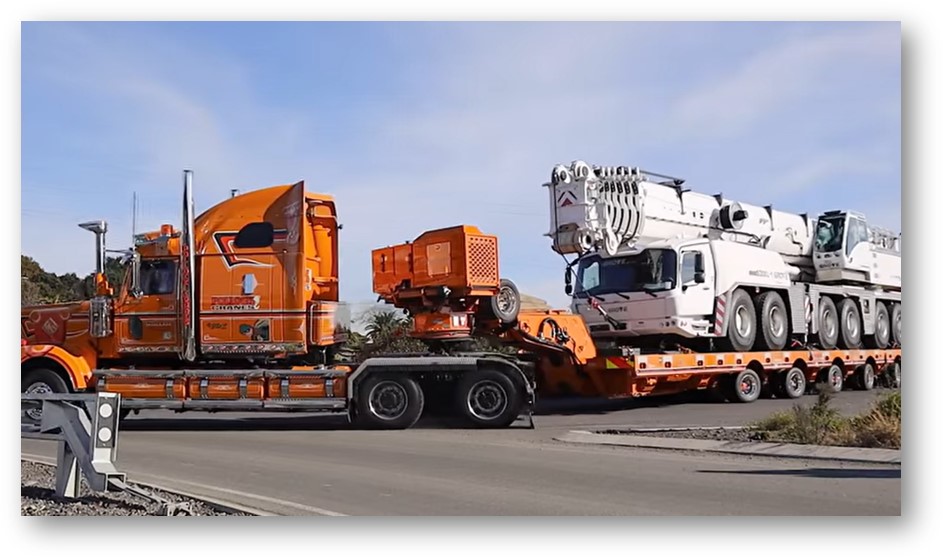
Hiring Trucks And What To Watch Out For
Often short term solutions require the hiring of heavy equipment, and trucks are no different. For people who aren’t in trucks everyday as part of their jobs the process may appear daunting. Here are some legal, safety, and wet weather driving tips for truck drivers that are useful in New Zealand.
New Zealand Truck Hire Legal Requirements
First let’s get the legalities out of the way – when hiring a New Zealand rental truck, you will encounter age and licensing restrictions that you must be aware of. There are also a number of costs that are required for you to be able to hire a vehicle, designed to protect both the rental company and yourself in the event of a collision or other accident. As long as you meet these restrictions, hiring a truck is a simple process.
- Age. While the age limit can vary from hire company to hire company, it is usually that all drivers must be at least 20 years old and hold a full driver’s license (not a learners permit or restricted licence). An international full license is required if you are a visitor from overseas and have a licence that is not written in English.
- Licences. While the majority of rental trucks in New Zealand are able to be driven on a Class 1 Drivers Licence (2-3 ton trucks, usually these will be listed as 10 – 20m³ capacities), some heavier trucks may require a Class 2 license. A Class 2 heavy traffic license will be required as a legal requirement.
- Bond. A rental bond is required for all vehicle rentals in NZ, for hiring a truck expect to pay a bond of around NZ$1000. This is refundable upon completion of the hire period and returning the vehicle in satisfactory condition. Cash or a signed credit card details are both acceptable methods of payment.
- Fuel. Trucks must be returned with the same level of fuel they started with. You will usually be provided with a full tank upon hire, it is common practice to return the vehicle with a full tank – if you do not you will be charged a set fee for replacement fuel.
- Booking Deposit. Most hire companies will require a deposit upon making a booking for a rental truck; the balance is then payable on collection. If you need to cancel your booking this almost certainly will not be refunded, however sometimes it can be transferred to another rental within a certain period of time.
Top 16 Rental Truck Safety Tips
Now let’s get straight into the safety tips – when driving larger, heavy truck rentals it is normal to be unfamiliar with the operation of the vehicle, its braking distances and manoeuvring abilities. Of course, on a normal driver’s license you won’t be driving any eighteen-wheelers, but even trucks that you can hire on a Class 1 license still require a different set of skills to operating a car, it is important to keep in mind the following tips.
- Plan Your Route In Advance. Work out where you are going and the best route to get you there before you set out, relying on electronic navigation systems is not always the best option when driving a truck as right hand turns and narrow streets may have an impact on the drive-ability of the route.
- Familiarise Yourself. Before you drive away, familiarise yourself with the driving controls, including lights, indicators, windscreen wipers, and position of the fuel cap.
- Set Up The Mirrors. Position your side and rear view mirrors to enable you to see as much of the road as you can.
- Get Comfortable. Make sure you are in a comfortable driving position before moving off (seat position, recline, heating/cooling, sunglasses etc).
- Monitor Following Distances. Trucks are much heavier than cars and need a longer braking distance – stay at least 5 seconds behind the vehicle ahead.
- Take Care When Changing Lanes. Check your mirrors carefully before changing lanes and always indicate to other road users.
- Avoid Sudden Manoeuvres. Give other road users plenty of time to react to any changes in direction or when stopping.
- Watch For Hazards. Look out for low-hanging tree limbs, power and phone lines and pay attention to clearance signs at bridges, overpasses and undercover car parks.
- Take Turns Slow And Wide. Don’t cut across corners as you may damage the rear wheels or the side of the truck or cut off another vehicle.
- Reverse Slowly. If you’re unsure of what is behind you, get out and check before you reverse, or have someone guide you using verbal or hand signals.
- Avoid Overusing The Brakes. Using a lower gear on steep descents is best practice for heavier vehicles and never use neutral as you risk losing control of the vehicle.
- Check Operating Instructions. When loading or unloading Box Body Trucks, check the instructions for operating the tail lift feature.
- Ensure All Loads Are Secure/Locked. After loading, ensure doors are securely locked, and your load is well secured and doesn’t hang over the sides.
- Take Regular Breaks. If it’s a long way to your destination, plan to stop often to refresh and refuel – both yourself and the truck.
- Drive To The Conditions. Always drive to the current conditions, roads may be wet or icy, slippery or dry, rough or smooth, narrow or wide, windy or straight – it is important to adjust your driving speeds and style to suit the ever changing conditions of New Zealand roads. See below for our wet weather driving tips.
- Know The Road Rules. Check out our quick refresher on the basic NZ Road Rules below or view the full NZ Road Code online and make sure you are familiar with all of the New Zealand Road Rules.

Wet Weather Driving In NZ
Weather conditions in New Zealand vary greatly from one end of the country to the other and are unpredictable at the best of times so it’s important to be prepared and drive accordingly. Extreme wet weather is something you could strike in any part of the country at any time of the year, but it is most prevalent during the winter months.
Water logged soil and heavy rainfall can result in flooding, slips or landslides and excess road surface water. Areas particularly prone to heavy rainfall include the West Coast of the South Island, the Otago and Southland region, the Coromandel Peninsula and very far north of the North Island however adverse weather conditions can be experienced all over NZ at any time of the year.
12 Wet Weather Driving Tips
When driving on New Zealand roads it is a good idea to drive to the conditions and take a little time to plan ahead. For our top 12 tips on wet weather driving in New Zealand take a look below.
1. Reduce Speed
The most important thing you can do in wet weather is stay in control of your vehicle. Having made sure the steering and brakes are serviced regularly on your vehicle, as a driver you can improve your handling and reaction times by slowing down and driving more cautiously than usual.
2. Increase Following Distances
The time and distance it takes to stop your vehicle will greatly increase in extreme wet weather. It is important to leave enough room between you and the vehicle in front of you to be able to react under unforeseen circumstances.
3. Avoid Large Masses Of Surface Water
Even if you are driving a specialised off-road vehicle, in times of heavy rain large puddles can become deceptively deep. If the vehicles exhaust or other mechanisms become submerged in the water it may cause the vehicle to stall leaving you stranded.
4. Look After Your Brakes
When driving under extreme wet weather conditions a vehicle’s brakes can become damp causing a delayed response or even become completely unresponsive. Obviously this is a very dangerous situation to find yourself in and best avoided if you wish to keep control of your vehicle.
5. Check For Weather Warnings
If there’s dangerous weather approaching, it will be mentioned on one of the many radio or television news stations around the country, on local weather forecast websites and in local weather Apps. Asking the locals is always a good idea too, especially if you are in flood or slip-prone areas.
6. Drive Defensively
Overestimate travelling times when driving in the rain, it will always take longer. Be extra cautious of slow moving vehicles, animals or other potential hazards on the road. Avoid overtaking unless absolutely necessary, keep your full attention on the road ahead. And take regular breaks from driving. Drive defensively and stay safe.
7. Don’t Panic If Skidding Occurs
Even the most careful drivers can find themselves caught in a skid. If this situation arises it is important not to panic, avoid slamming on the brakes (which tends to be most people’s instinctive reaction) instead gradually allow the vehicle to slow while attempting to steer it in the direction you wish it to go.
8. Check Your Tyres Before Setting Out
Good tyres play a big factor in road safety whether the roads are wet or not, ensuring they have the required tread depth and inflation levels before setting out on any road trip is crucial. Don’t forget to check the spare tyre as well.
9. Avoid Using Cruise Control
While cruise control and other driver assistance technologies are useful in ideal driving conditions, the chance of losing control of the vehicle can increase when used under wet or difficult conditions. Drivers should be in full control of the vehicle and concentrating on every aspect of driving in order to respond accordingly, cruise control features can delay the driver’s ability to reduce speed hastily.
10. Increase Your Visibility
If it is raining hard enough to mean the windshield wipers are on it is a good idea to turn your head lights on, even if you don’t need them to see the road ahead. Greater visibility is always a bonus for you, other motorists and pedestrians. Pull over if visibility deteriorates to dangerous levels.
11. Travel During Daylight Hours
Where possible travelling in the rain is best completed during daylight hours. Visibility, driver alertness and the ability to make regular pit-stops at local cafes, stores and places along the way increases during the day. Safety always comes first, if the weather is really bad pull over in a safe place and wait it out.
12. Take Extra Care After Dry Periods
When rain occurs after a long dry spell the build-up of grease, dirt and other surface matter can cause the road surface to become unusually slippery. Being aware of the phenomenon means drivers can reduce speeds and act accordingly.
If you would like to read the full article head on over to the USAVE website.



